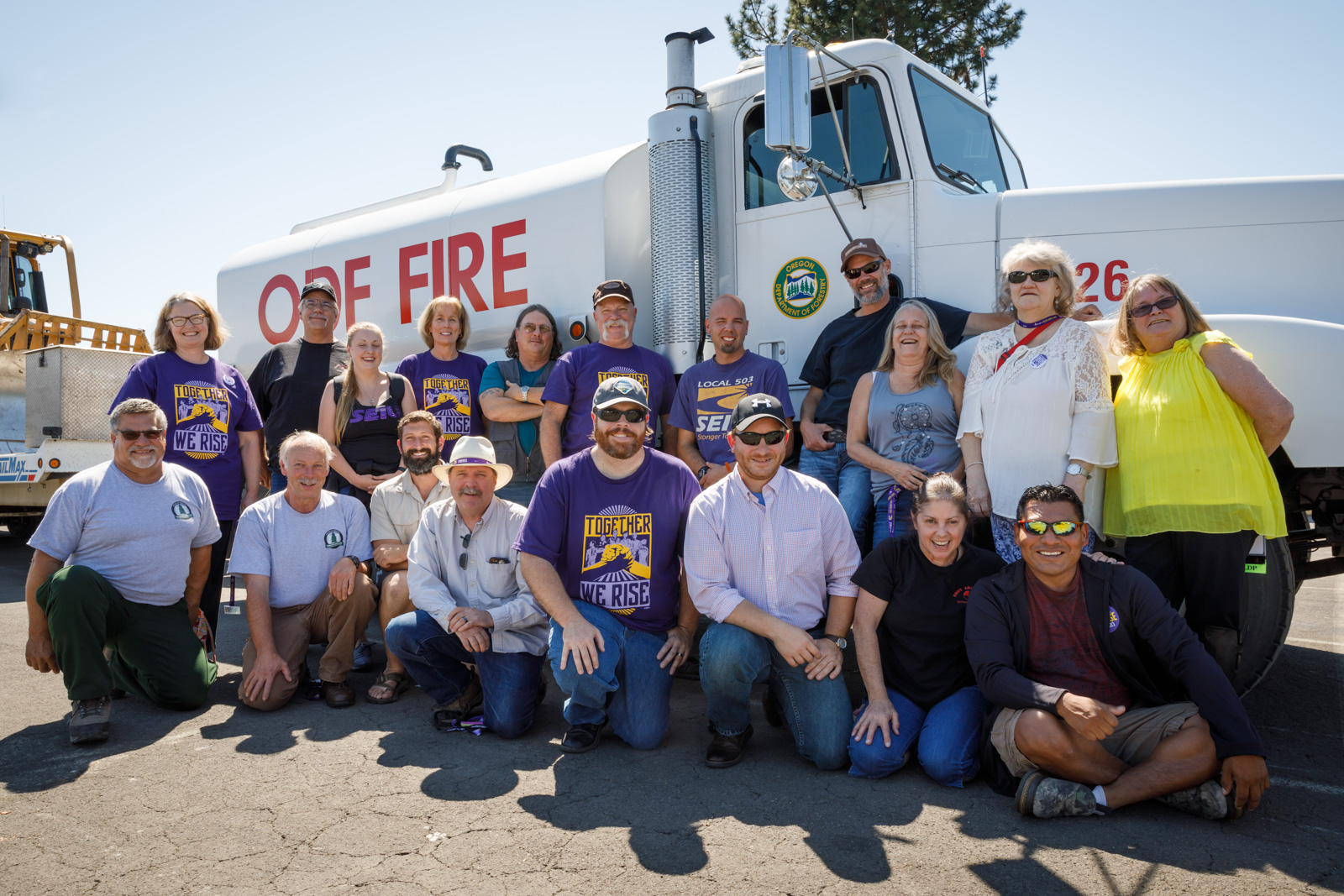Our world is changing. Services like public health and firefighting are indispensable. Do we have the infrastructure we need to survive the next crisis?

September 14, 2020
In March of 2020 the coronavirus swept through Oregon, resulting in an unprecedented public health crisis and a recession. Hundreds of thousands of Oregonians turned to unemployment benefits, food assistance (SNAP), and the Oregon Health Plan for support. Seniors and people with disabilities relied on Medicaid-funded in-home support programs while young families were reminded that public school is indispensable.
This week wildfires are wreaking havoc on communities across the State. First responders are risking their lives to protect us and emergency communications systems are alerting people to imminent danger. Our pathway back will require a massive public investment in infrastructure and people.
As crisis after crisis hits, people are looking to public services to keep themselves, their families, and their communities safe. In the midst of this we’re facing a catastrophic budget deficit that could force the State to cut these services and prolong our suffering.
Next year, the State Legislature will have to confront a $4 billion budget shortfall. Legislators will need to raise revenue or make cuts – or more likely do both – in order to balance the budget. Decades of underinvestment in public infrastructure has left State services extremely vulnerable to a shortfall. Few programs are adequately funded, many services are inaccessible to working families who earn just above the means test, public employee salaries lag behind the private sector, and many legacy systems are in dire need of upgrades.
The hard truth is that cuts anywhere will hurt people and slow our economic recovery. Short of a relief package from the Federal Government, there’s not much we can do to avoid that.
We know from 2008 that cuts to state and local government budgets prolong recessions. Layoffs and salary reductions in the public sector just mean more people out of work and fewer people with dollars to spend at local businesses. Similarly, cuts to service levels stretch family budgets and push more people into acute poverty. Putting off upgrades and reducing workforces in the public sector will leave us less prepared the next time a crisis hits.
Experts in environmental sciences agree that pandemics, wildfires and other extreme weather events will be increasingly common and violent in the years to come. 2020 may not be an anomaly, but rather a harbinger of the future. And if that’s the case, we need to radically rethink the systems we turn to when these crises hit.
We can choose to build a public health infrastructure that’s ready for the next COVID-19. We can choose to build a forest management and first-responder system that’s ready for the next wildfire season. We can choose to build a social safety net that won’t break down when people need it the most. Anyone who tells you these things aren’t possible lacks the creativity and vision we need in this moment.
2020 has been traumatic for so many people in Oregon and across the country. We will get better at this. That’s what humans do. But doing so will require a major shift in focus, resources and expertise into our critical, and undervalued, public services.
